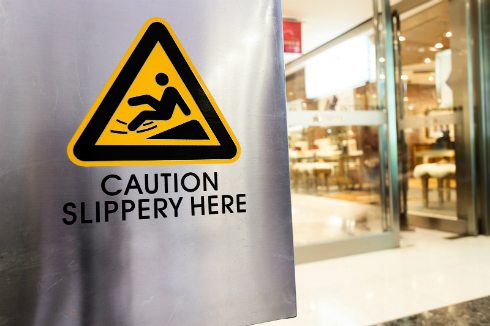2 Ways to Control Slip Hazards in the Workplace
‘Workers have the right to a safe and healthy workspace.’
Cuts, bruises, strains, sprains and broken bones. These injuries resulting from slips in the workplace may have cataclysmic effects that can render the victim immobile or worse, cause premature death.
This is why preventing such injuries should be a key goal in every workspace. How can you do this? As the employer, you need to learn how to identify and assess the common slip hazards in your workplace to help you find an effective slip resistant treatment and create a safe, healthy and comfortable office environment for your employees, clients and customers. This way, you can improve your business productivity at the same time promote well-being for your employees.

- slippery surfaces (e.g. greasy or oily floors)
- spills and contaminants on the floor (e.g. spills of dry or wet substances)
- changes in flooring surfaces (e.g. replacing carpets with tiles or polished timbre)
- changes in slopes and walkway levels (e.g. ramps)
- fine growth (e.g. weeds on the pavement)
- poorly maintained surfaces (e.g. cracks and holes in walkways)
- unsuitable footwear
- weather condition (e.g. rain, wind and storms)
While some of these hazards are quite visible, slips often happen because people are not aware of a potential threat. That’s why assessing your surroundings and conducting a floor slip testing is essential to minimise the risks of slips at work. By paying constant and appropriate attention to workplace health and safety, slips can be controlled and avoided.
Control Measures to Reduce the Risks of Slips at Work
Floor safety is one of the most important safety regulations that should be practiced in all properties. Flooring is the most basic element to consider in building a safe home or establishment. Nowadays, there are a lot of tiles, materials and accessories in the market that are slip resistant and very safe to use. You may be wondering why floor safety is important and why this should be considered in every building project, let me give you a few reasons.
- Engineering Controls. One of the best ways to eliminate or lessen the risks of slips in the workplace is to build and design a facility with safety in mind. Hence, make sure to implement engineering control. These include minimising any changes in the floor level, using slip-resistant flooring surfaces, avoiding sudden transitions in floor surface texture, and ensuring adequate lighting in various areas to highlight the changes of the floor surface.
- Administrative Controls. In order to avoid slips in the office, employers should design and maintain the workplace environment by creating slip control measures, such as the following: identifying slip hazards by inspecting the premises, making slippery areas identifiable for the employees (e.g. provide wet floor signage) and establishing safe work practices (e.g. wearing appropriate footwear, design tasks that minimise excessive pulling, pushing or overreaching and conducting a routine cleaning).
Bottom Line
Understanding each of these slip hazards will help protect workers. It will also help you implement health and safety policies and develop programs (like the ones mentioned above) that will prevent workplace injuries.
Slips are among the leading causes of injuries affecting workers in a range of industries. To reduce the risk of slips at work, conduct a floor slip test to identify possible threats. Contact us at Slip Check. We are experts in slip assessment services, providing you with reliable control measures to keep your workspace slip-resistant for the health and safety of your employees.

